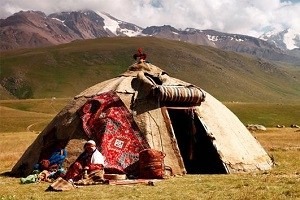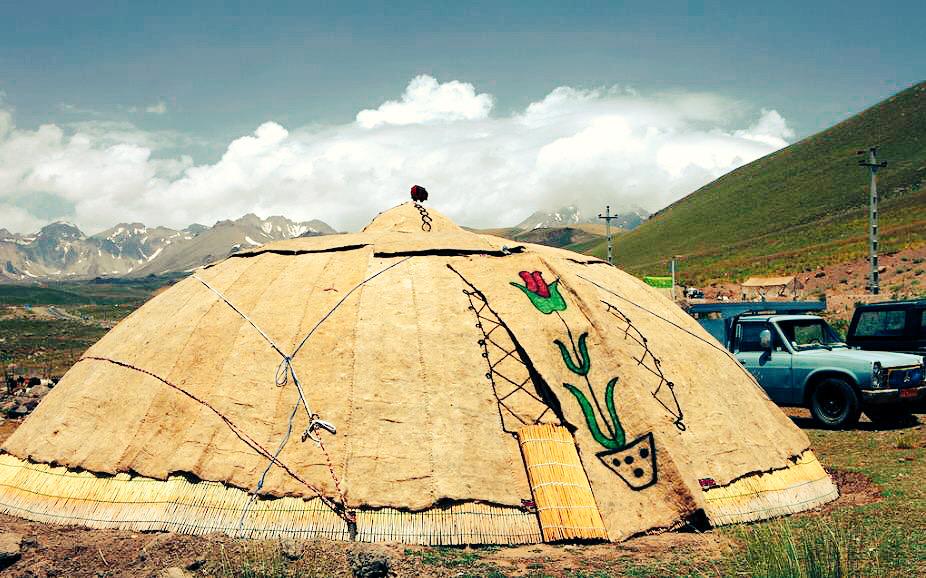One of the most crucial technological developments for steppe nomads (actually practising transhumance in most cases) was the invention of a tent that was up to the challenge.
The challenge being something that could be packed up on wagons to be transported between summer and winter grounds that was also strong enough to resist the extremes of weather on the Eurasian steppe.
In summer it gets incredibly hot. In winter it might be below freezing for months on end. And there is an ever-present wind, sometimes becomes a gale.
Although archaeologists have excavated sites with permanent or semi-permanent houses, there are no remains or records of the tents invented in the late Neolithic period.
Everyone today knows what a yurt is like and of course they must have been similar. Circular structures of timber covered with felt and animal skins with a hearth inside. Skins, furs, and woven fabrics for the floors.

There are many variations still in use across the world today from Mongolia to northern Scandinavia.
Today I found this video of the structures used by Shahsavan who live in Iran on the border of Azerbaijan.

In the video they erect a tent and you see how they use long straps and ropes to put the structure under tension before applying the felt covering.
This tension makes them incredibly sturdy and able to resist the high winds of the mountain pastures.

It’s very simple and yet very clever.
Tent video:
For more about the Shahsavan click the link to this article.

